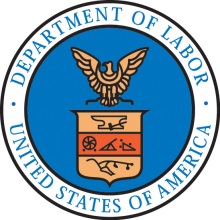10c
|
Cash
on Hand
(line
10a minus line 10b)
|
This
is an automatic calculation, which is Line 10a (Cash Receipts)
minus Line 10b (Cash Disbursements).
The
cash on hand amount should represent immediate cash needs. An
explanation for the excess cash on hand amount should be provided
in Section 12, Remarks.
NOTE:
In accordance with Department of Treasury regulations, federal
cash MUST BE DRAWN SOLELY TO ACOMMODATE YOUR IMMEDIATE NEEDS ON
AN “AS NEEDED” BASIS ONLY must be drawn solely to
accommodate immediate needs.
HARD
EDIT - Line 10c must be equal to Line 10a minus Line 10b
HARD
EDIT - Line 10c cannot be negative.
|
|
|
Federal
Expenditures and Unobligated Balance:
|
|
|
10d
|
Total
Federal Funds Authorized
|
Enter
the total amount of Dislocated Worker (DW) funds (from the sState
DW funding stream allotment) allocated to the local areas
for allowable local DW activities.
NOTE:
After the first 2 years of a Program Year of funding, any local
DW funds recaptured by the sState and returned for statewide
activities should be reflected by a decrease in this entry. A
corresponding increase should will be made to Line 10d of the
Statewide DW formatreport (ETA-9130 (E)). (Local DW funds
recaptured from one local area and allocated to another local
area will precipitate no change to this line item.)
HARD
EDIT – Sum of Lines 10d for all subaccount components must
be equal to NCFMS cumulative obligation. (This hard edit will be
imposed on the FINAL 10d subaccount entry.)
|
|
|
10e
|
Federal
Share of Expenditures
|
Enter
the cumulative amount of accrued expenditures for allowable costs
associated with the funds authorized on Line10d (Total Federal
Funds Authorized).
DOL/ETA
requires reporting on an accrual basis. If the recipient’s
accounting system is not on an accrual basis, the recipient will
not be required to convert its accounting system, but must
develop and report such accrual information through best
estimates based on an analysis of the documentation on hand (2
CFR 2900.14).
Accrued
eExpenditures for reports prepared on an accrual basis are the
sum of: are the sum of actual cash disbursements specified in
Line 10b for direct charges for goods and services; the amount of
indirect expenses incurred; net increase or decrease in the
amounts owed by the non-Federal entity for goods and property
received; and services performed by employees, contractors,
subrecipients, and other payees, and programs for which no
current services or performance are required such as annuities,
insurance claims, or other benefit payments,charged to the award;
minus MINUS any rebates, refunds, or other
credits.; PLUS the total costs of all goods and property
received or services performed, whether or not an invoice has
been received or a cash payment has occurred. Accrued
expenditures are to be recorded in the reporting quarter in which
they occur, regardless of when the related cash receipts and
disbursements take place.
Unless
cash advances have been made to subrecipients or there is a
reduction for rebates, refunds, or other credits, this entry will
usually be greater than Line 10b, (cCash dDisbursements), because
accruals (goods and services received but not yet paid for) must
be included on this line item. Non-Federal entities must
liquidate existing cash advances before requesting additional
advances (2 CFR 2900.7). In addition, recipients operating on a
reimbursement basis must report all accrued expenditures
(including cash disbursements for allowable grant activities) in
the quarter in which they occur (no matter what source initially
pays the costs.)
HARD
EDIT - Line 10e cannot exceed Line 10d.
SOFT
EDIT - Line 10e for “This Period” should not be
negative.
NOTECAUTION:
If the cumulative entry for this line item is less than the
previous period cumulative amount, a valid explanation should be
provided in Section Item 12, Remarks.
HARD
EDIT – Sum of Lines 10e for all subaccount components
cannot exceed NCFMScumulative obligation. This hard edit will be
imposed on the FINAL 10e subaccount entry.
NOTE:
During the closeout process, funds not expended during the grant
period will be de-obligated. Exception:
Funds obligated for pay-for-performance contracts (WIOA Sec. 189
(g)(2)(D)).
|
|
|
10f
|
Total
Administrative Expenditures
|
Enter
the cumulative amount of accrued expenditures charged to the DW
local areas subaccountgrants for administrative activities.
(This
line item is a portion of the amount reported on Line 10e
(Federal Share of Expenditures).)
NOTE:
Because 10% of the total Youth, Adult, and
Dislocated Worker funds available for expenditure at the local
areas may be expended on administration (without regard to
funding source), the funds identified on this line item, do not
need to be allocable to the local DW program, but may be
allocable to local Youth and Adult activities, as well.
According
to WIOA Sec. 3 (1), “[t]he term ‘‘administrative
costs’’ means expenditures incurred […] in the
performance of administrative functions and in carrying out
activities under title I that are not related to the direct
provision of workforce investment services (including services to
participants and employers). Such costs include both personnel
and nonpersonnel costs and both direct and indirect
costs.”Administrative costs must be necessary and
reasonable costs (direct and indirect) which are not related to
the direct provision of services to participants, but relate to
overall general administrative functions.
Consult
the WIA regulations at 20 CFR 667.220 for the specific definition
for administrative costs and guidance on the distinction between
administrative and program costs.
|
|
|
10g
|
Federal
Share of Unliquidated Obligations
|
Enter
any obligations incurred, for which an accrued expenditure has
not yet been recorded incurred, as of the reporting period end
date.
Unliquidated
obligations should include amounts which will become due to
subrecipients and subcontractors. On the final report, this line
item should be zero.
Obligation,
as defined in 29 CFR 97.3, means the amount of orders placed,
contracts and subgrants awarded, goods and services received, and
similar transactions during a given period that will require
payment by the grantee during the same or a future period. The
OMB Uniform Guidance defines “Obligation” in 2 CFR
200.71 as follows: “When used in connection with a
non-Federal entity’s utilization of funds under a Federal
award, obligations means orders placed for property and services,
contracts and subawards made, and similar transactions during a
given period that require payment by the non-Federal entity
during the same or a future period.” Obligations are legal
requirements - not plans, budgets, or encumbrances. Examples of
obligations or legal commitments include subgrant agreements,
purchase orders, or cash disbursements. Obligations do not
include such actions as projected staff time, future or projected
rent payments, future or projected training, or items that are
budgeted during the period of the grant award.Please refer to 2
CFR 200 and 2 CFR 2900 for additional guidance.
NOTE:
For DOL/ETA grants, the only liquidation that can occur during
closeout is the liquidation of accrued expenditures (NOT
obligations) for goods and/or services received during the grant
period.
Do
not include any amount on Line 10g that has been reported on Line
10e (Federal Share of Expenditures) or 10f (Total Administrative
Expenditures). Do not include any amount on Line 10g for a future
commitment of funds/encumbrances (e.g., entire lease, budgeted
salary costs) for which an obligation has not yet been incurred.
Local
funds obligated for Pay-for-Performance contracts remain
available until expended. See WIOA Sec. 189 (g)(2)(D).
|
|
10h
|
Total
Federal Obligations
(sum
of lines 10e and 10g)
|
This
is an automatic calculation, which is the sum of Lines 10e
(Federal Share of Expenditures) and 10g (Federal Share of
Unliquidated Obligations).
HARD
EDIT – Line 10h must be equal to Line 10e plus Line 10g
HARD
EDIT - Line 10h cannot exceed Line 10d.
|
|
10i
|
Unobligated
Balance of Federal Funds
(line
10d minus line 10i)
|
This
is an automatic calculation, which is Line 10d (Total Federal
Funds Authorized) minus Line Item 10h (Total Federal
Obligations).
HARD
EDIT - Line 10i must be equal to Line 10d minus Line 10h
|
|
Recipient
Share:
|
|
10j
|
Total
Recipient Share Required
|
Enter
the total match requirement, if applicable. A match requirement
will be listed in the grant award document and on the SF-424a,
Section A, Column F “Non-Federal.”
If
there is no match requirement, a ZERO must be entered.
This
line item must include the amount of non-federal share employers
are required to provide based on incumbent worker training (IWT)
contracts.
NOTE:
Per WIOA Sec. 134 (d)(4)(C), employers participating in a local
area incumbent worker training (IWT) program shall be required to
pay for the non-Federal share of the cost of providing the
training to incumbent workers of the employers. WIOA Sec. 134
(d)(4)(D)(ii) specifies that such contributions shall
not be less than:
10
percent of the cost, for employers with not more than 50
employees;
25
percent of the cost, for employers with more than 50 employees
but not more than 100 employees; and
50
percent of the cost, for employers with more than 100 employees.
|
|
10k
|
Recipient
Share of Expenditures
|
Enter
any non-Federal funds expended, by recipient organization, for
the purposes or activities of subject grant.
This
line item must include employers’ share of expenditures, as
applicable to the IWT employer match requirement in line 10j.
Additionally,
Eexpenditures identified on this line item must:
bBe
allowable costs which could otherwise have been paid for out of
subject grant funds.;
These
expenditures should iInclude both match and other non-Federal
leveraged resources.; and
IncludeThe
value of allowable non-Federal in-kind match contributions
should also be included.
This
entry may (and often will) exceed the required match entered on
Line 10j (Total Recipient Share Required).
NOTE:
Non-Federal funds expended for the purposes or activities of the
subject grant, which are allowable under all OMB Circulars the
OMB Uniform Guidance (2 CFR 200 and 2 CFR 2900), but which are
not completely allowable under the subject grant (due to a
program specific restriction), should not be reported on this
line item, but should be included in the quarterly progress
report. Other federal funds expended for the purpose and
benefit of this grant should be included in line item 11a (Other
Federal Funds Expended).
|
|

